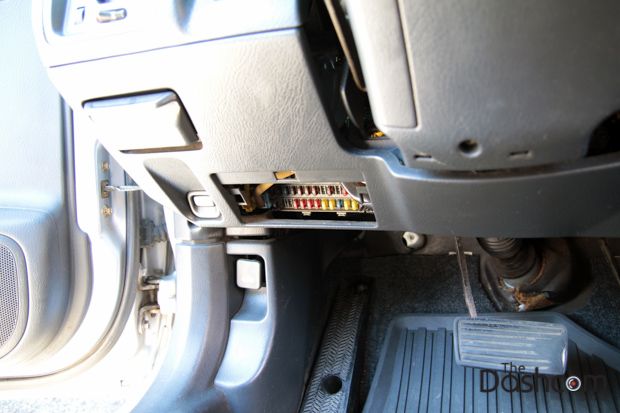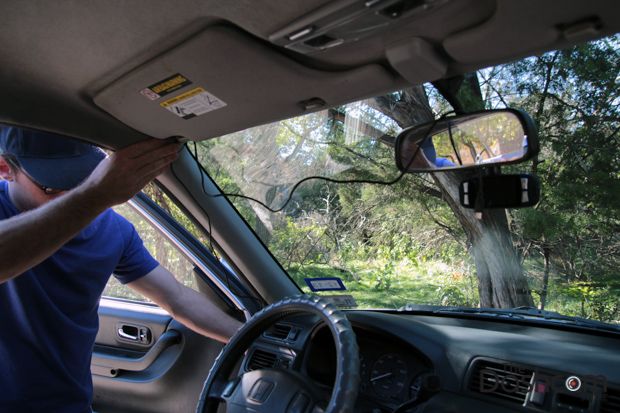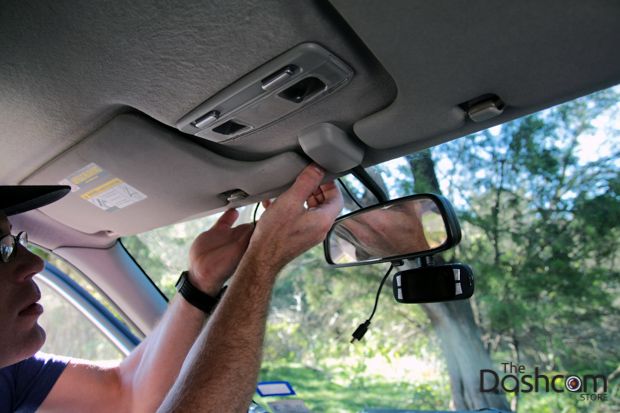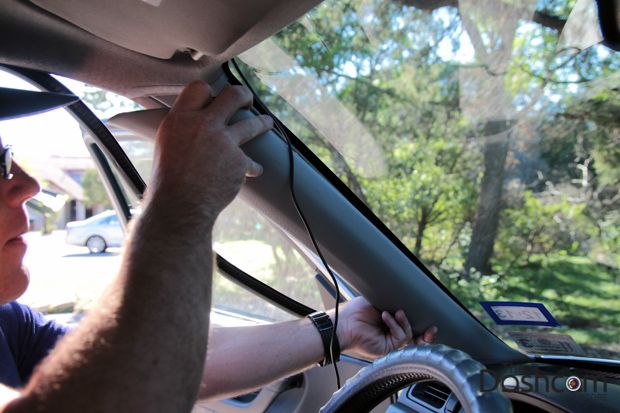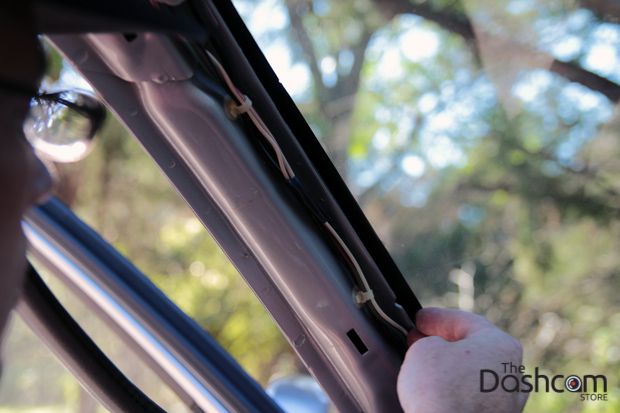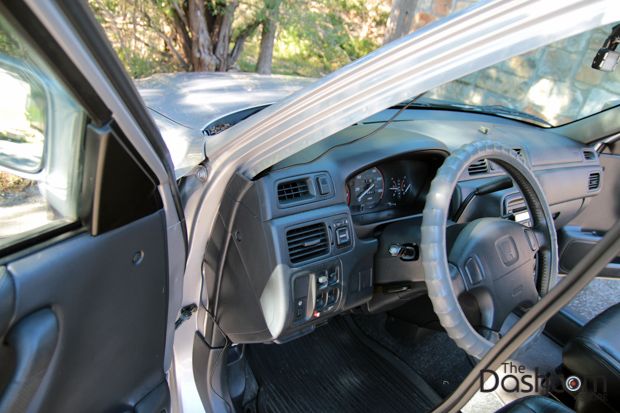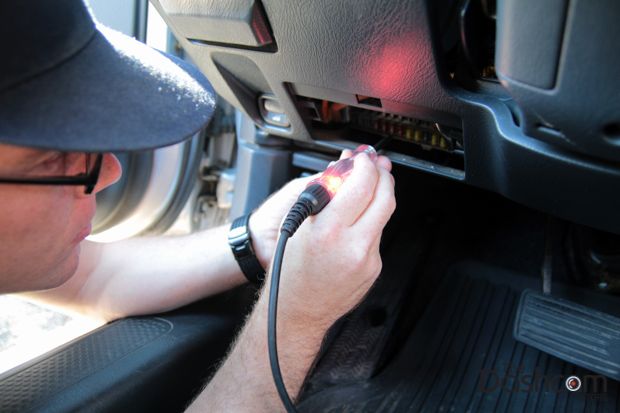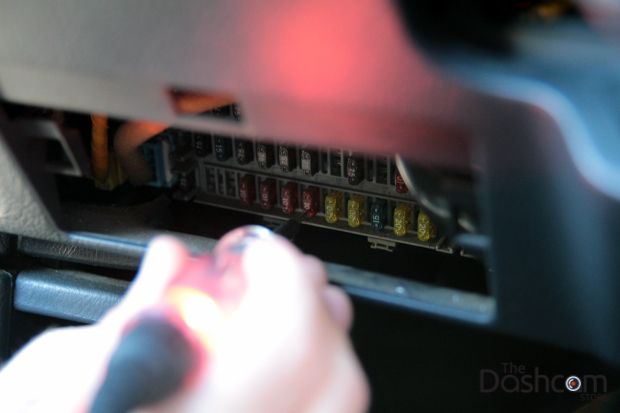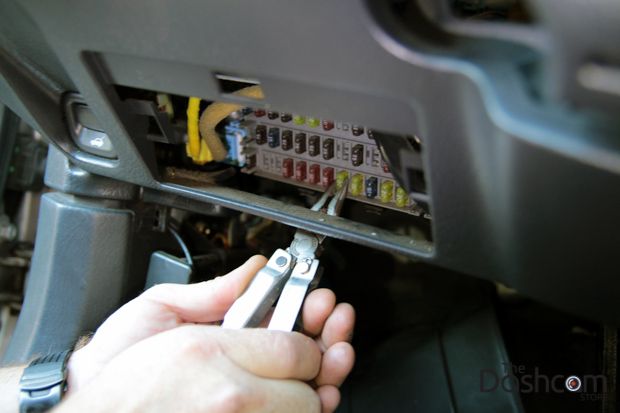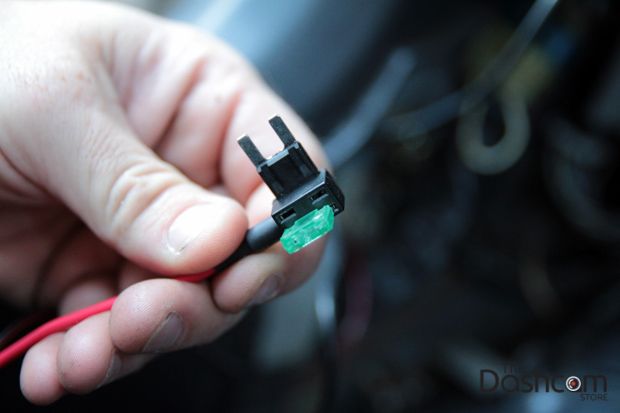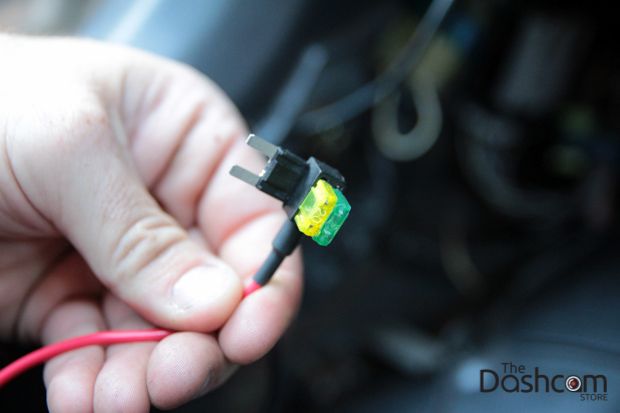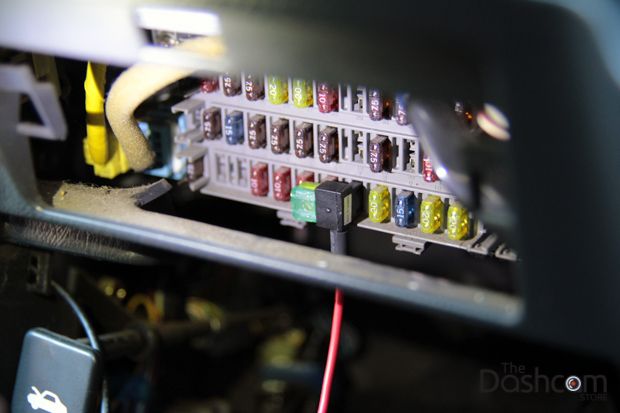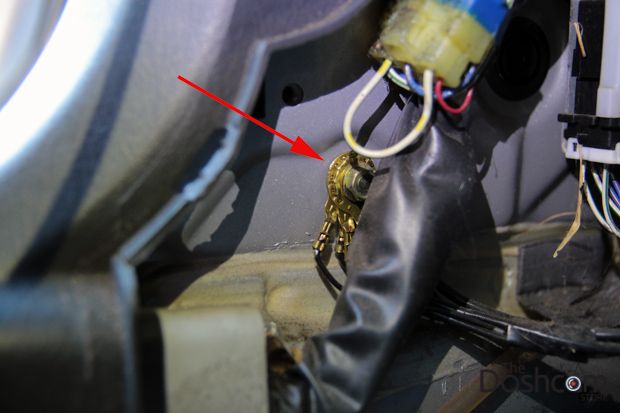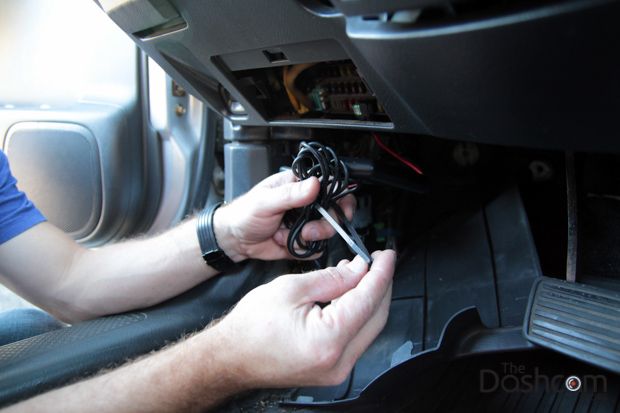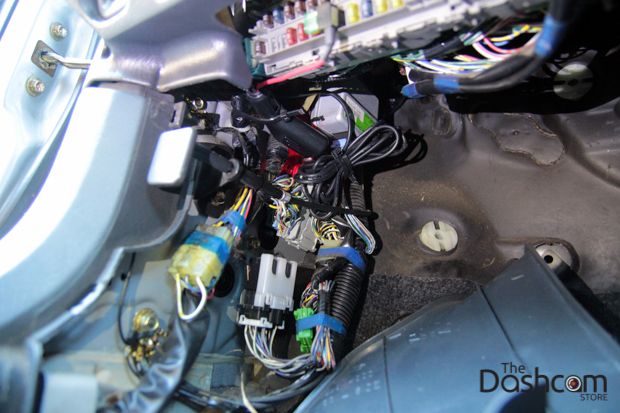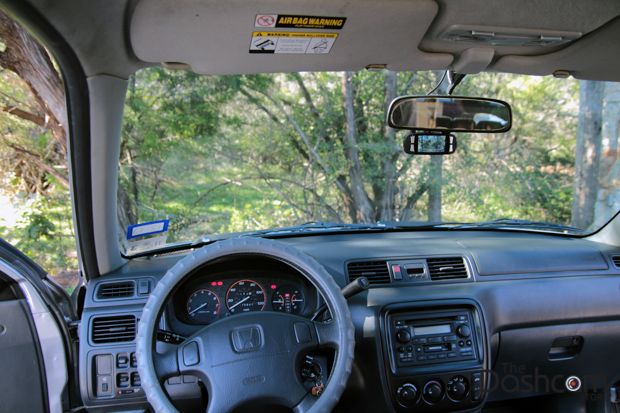Provided by our partners at The Dashcam Store™
Follow these instructions for installing a dash cam in your vehicle, by tapping in to your vehicle's power supply. This is known as hard-wiring, but it's not hard to do! A dash cam installation kit from The Dashcam Store™ is used in this procedure to make the job quick and easy:
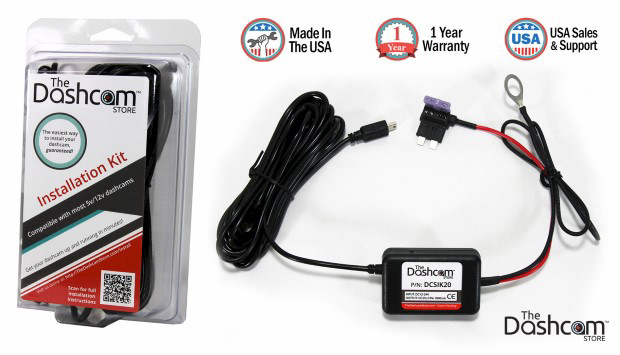
WARNING: this type of installation should be performed by a qualified individual or business only. Working with your vehicle's power system can be dangerous to both you and your vehicle if you do not know what you are doing! If you have any doubts, please consult a professional.
This vehicle in example is a 2000 Honda CRV. This installation write-up is intended only to be a guide since vehicle designs and fuse box locations can vary significantly. The dash cam used in this how-to is the ever-popular full HD DVR-M880C (G1W-C).
To view the advanced installation process for the dual-lens, full HD, WiFi equipped BlackVue DR650GW-2CH and Power Magic Pro, please click here, or to view the rest of our Dashcam Installation Photo Galleries please click here.
On to the installation! Click on any image below to view a larger version.
Step 1 - Decide on your dash cam's positioning
Sitting in your driver's seat in your vehicle, you want to try different positions for your dash cam. It's a good idea to place the dash cam within arm’s reach of your seat, but definitely do not mount the dash cam in a location that obstructs your view of the road ahead. In this example, the customer has chosen to place their dash cam immediately under the rear view mirror.
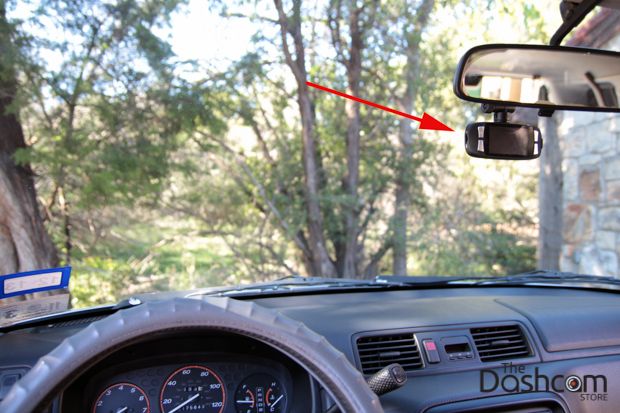
Step 2 - Locate your vehicle's fusebox
Since we are running a power cable from the dash cam to the fuse box, we need to know where the fuse box is. Most vehicles have a fuse box underneath the dashboard on the driver's or passenger's side. In this case, the fusebox is easily accessible below the steering column (behind a removable panel). Consult your owners manual for the location of the fuse box in your vehicle.
Step 3 - Begin routing the power cable
Starting at the dash cam, lay out the power cable roughly where it will run once hidden behind the vehicle's interior panels. This gives you an idea of where to route the cable and how much slack to leave on the way down to the fuse box.
We begin by tucking the power cable into the headliner.
In most cases, simply tugging on the rubber trim along the A-pillar reveals a gap in which the power cable may be run from the headliner down to the fuse box. In rare cases, it may be necessary to remove the A-pillar cover which will allow complete access to this area of the vehicle for the routing of the power cable. Many A-pillar covers can simply be popped off; consult your vehicle's technical manual or consult a professional if you are not sure how to remove interior panels.
For illustrative purposes, we have removed the A-pillar cover during this installation. Again, in most cases, the A-pillar does not need to be removed.
Tuck the power cable alongside the existing wires in the A-pillar.
Route the power cable around the side and behind the rest of the interior panels down towards the fuse box.
Step 4 - Locate a fuse that is "hot in start"
In general, vehicle fuses may have power at all times (always hot), or only when the vehicle is running (hot in start). In order to have the dash cam come on automatically when the vehicle is running, and turn off automatically when the driver turns off the vehicle, we will connect our add-a-circuit kit to a "hot in start" fuse. In order to identify which fuses are hot in start, we use a simple circuit tester that illuminates when power is present.
You must use the circuit tester to ensure there is no power at the fuse when the ignition key is off, and power is present only when the ignition key is turned to the run position.
Step 5 - Install the installation kit add-a-circuit power cable
Make sure the key has been removed from the ignition. Using a fuse puller or a pair of pliers, gently remove the fuse you identified in step 4.
Install the fuse you just removed into the installation kit add-a-fuse circuit. The first image below shows the add-a-circuit as you received. The second image is with your car's original fuse installed into the add-a-circuit.
Plug the add-a-circuit in to the empty spot where your "hot in start" fuse was originally.
Step 5 - Locate a ground point
The other end of the installation wiring kit must be grounded to your vehicle. Most cars have at least one obvious ground point near the fuse box, as shown in the image below. The lower kick panel has been removed to access this ground point. Remove the bolt and add the ground lug from installation kit (not shown).
Step 6 - Button up your install
Use a zip tie to bundle the excess power wire together. Then, safely secure the wiring to a solid mounting point underneath the dashboard or behind the kick panel using more zip ties.
Step 7 - Test your installation
Insert your key in the ignition and turn it to the run position. If everything was installed correctly, you should see your dash cam turn on and begin recording! At this point you may go ahead and reinstall all interior panels that were removed to facilitate running the power cable.
Easy, right? Click here to get your own dash cam installation kit produced by The Dashcam Store™, made right here in the USA. Drive safe!
To request additional support information, please e-mail us at support@dashcambros.com.
Disclaimer
The Dashcam Store™ Installation Instructions are proprietary to The Dashcam Store LLC. ("The Dashcam Store™") and no ownership rights are hereby transferred. No part of these Installation Instructions shall be used, reproduced, translated, converted, adapted, stored in a retrieval system, communicated or transmitted by any means, for any commercial purpose, including without limitation, sale, resale, license, rental or lease, without the prior express written consent of The Dashcam Store™.
The Dashcam Store™ does not make any representations, warranties or guarantees, express or implied, as to the accuracy or completeness of these installation instructions. Users must be aware that updates and amendments will be made from time to time to these installation instructions. It is the user's responsibility to determine whether there have been any such updates or amendments. Neither The Dashcam Store™ nor any of its directors, officers, employees or agents shall be liable in contract, tort or in any other manner whatsoever to any person for any loss, damage, injury, liability, cost or expense of any nature, including without limitation incidental, special, direct or consequential damages arising out of or in connection with the use of these installation instructions.
DashCam Bros does not make any representations, warranties or guarantees, express or implied, as to the accuracy or completeness of these installation instructions. Users must be aware that updates and amendments will be made from time to time to these installation instructions. It is the user's responsibility to determine whether there have been any such updates or amendments. Neither DashCam Bros nor any of its directors, officers, employees or agents shall be liable in contract, tort or in any other manner whatsoever to any person for any loss, damage, injury, liability, cost or expense of any nature, including without limitation incidental, special, direct or consequential damages arising out of or in connection with the use of these installation instructions.

 Fleet Sales
Fleet Sales
